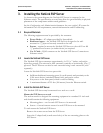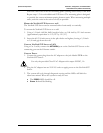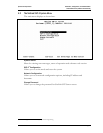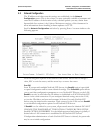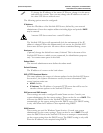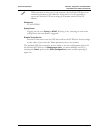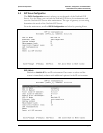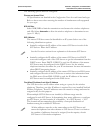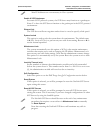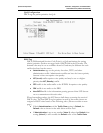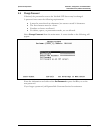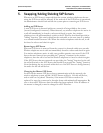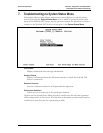
SpectraLink Corporation Installation, Configuration, and Administration
NetLink SVP Server (within IP environments)
PN: 72-0178-01-F.doc Page 22
The following options must be configured:
Phones per Access Point
AP specifications are detailed in the
Configuration Notes
for each brand and type.
Refer to these notes when entering the number of simultaneous calls supported
for your type.
802.11 Rate
Select 1MB/2MB to limit the transmission rate between the wireless telephones
and APs. Select Automatic to allow the wireless telephone to determine its rate
(up to 11 Mb/s).
SVP-II Master
The master SVP Server must be identified in an IP system. Select one of the
following identification options:
• Statically configure the IP address of the master SVP Server in each of the
SVP Servers. Enter the IP address.
See the Overview section for an explanation of the master SVP Server.
• Statically configure the IP address of the master SVP Server in a DHCP
server and configure each of the SVP Servers to get the information from the
DHCP server. Enter DHCP. If DHCP is used, the IP address of the master
SVP Server must be configured in the DHCP server. See the wireless
telephone interface document for your IP environment for more information
about DHCP integration factors.
• Statically configure the IP address of the master SVP Server in a DNS server
and configure the each of the SVP Servers to retrieve this information from
the DNS server. Enter DNS. If DNS is used, the IP address of the master
SVP Server must be configured in the DNS server.
First Alias IP Address/Last Alias IP Address
The SVP Server uses an IP address when acting as a proxy for the wireless
telephone. Therefore, one alias IP address is required for every installed NetLink
Wireless Telephone. These IP addresses must be entered as a range and must be
assigned solely for this purpose.
When multiple SVP100 Servers are installed, a different range must be
configured in each SVP Server. In determining how many addresses to configure
per SVP Server, use this formula: (# of handsets / # of SVP Servers) + 30%.
This formula will accommodate the possibility of unequal distribution of
handsets among the available SVP Servers.
All alias addresses must be on the same subnet as the SVP Server and
cannot be duplicated on other subnets or SVP Servers. There is no limit to
the number of addresses that can be assigned, but the capacity of each
SVP Server is 500 wireless telephones.



